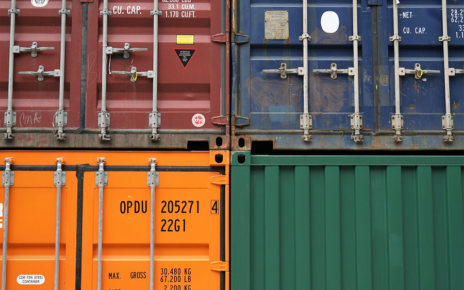Warehouse safety is often viewed through the lens of compliance—mandatory training, signage, and the occasional audit. But true safety leadership goes deeper. It’s about building a culture in which safety isn’t just a box to check, but a shared value embraced across every layer of an organisation.
In the high-pressure world of logistics and supply chain management, it’s easy for safety to get sidelined in favour of speed. Orders must be fulfilled, deadlines met, and productivity optimised. Yet the reality is this: without a strong safety culture, even the most efficient warehouse can grind to a halt due to incidents, injuries, or unplanned downtime.
Forward-thinking leaders understand that operational success and safety culture are not competing priorities—they’re mutually reinforcing. As outlined in Protex AI’s guide on warehouse safety culture in logistics, empowering teams with the right tools, processes, and mindsets can reduce risk, improve morale, and boost overall performance.
What Is Safety Culture—and Why Does It Matter?
Safety culture refers to the collective attitudes, beliefs, and behaviours that influence how people perceive and manage risk in the workplace. It’s what drives employees to wear PPE even when no one is watching, report hazards before they cause harm, and look out for one another on the job.
Unlike policies or procedures, culture is lived. It’s shaped by what leaders prioritise, what behaviours are rewarded (or ignored), and how teams respond when mistakes happen. A strong safety culture fosters:
- Trust between managers and staff
- Transparency in reporting near misses and concerns
- Consistency in how safety expectations are communicated and enforced
- Engagement in continuous improvement efforts
In a warehouse environment where hazards are ever-present, these cultural foundations can make the difference between daily smooth operations and costly disruptions.
The Role of Leadership in Shaping Culture
Culture begins at the top. Supply chain leaders set the tone—intentionally or not—for how seriously safety is taken. When executives visibly prioritise safety through actions (not just slogans), employees follow suit.
Here’s how leadership can embed safety into warehouse culture:
- Regularly visit facilities and participate in safety walks
- Include safety metrics in operational reviews and performance targets
- Allocate budget for safety technology and training—not just reactive fixes
- Recognise and reward proactive safety behaviours
These actions show teams that safety isn’t a checkbox—it’s part of what success looks like in the business.
Empowering Supervisors and Line Managers
While executive support is critical, day-to-day culture is shaped most strongly by frontline supervisors. These managers must be equipped not only with safety knowledge, but also with leadership and communication skills to foster psychological safety and accountability.
Encouraging open dialogue, leading by example, and addressing unsafe behaviour constructively (not punitively) are hallmarks of safety-focused managers. Giving them the tools to monitor, assess, and improve safety performance in real time is equally important.
AI-powered safety platforms can support this by giving managers real-time alerts, behaviour trend reports, and visibility into high-risk areas—all without micromanaging or surveillance-style oversight.
Making Safety Everyone’s Responsibility
The best safety cultures decentralise ownership. Instead of relying solely on EHS professionals, they make safety a shared mission across roles—from warehouse operatives to shift leads to maintenance teams.
This can be encouraged by:
- Creating safety champions at each shift or team level
- Involving staff in hazard assessments and control planning
- Establishing open feedback loops for reporting risks or improvements
- Gamifying safe behaviours through point systems or peer recognition
When employees feel empowered, they become safety advocates—not just safety participants.
Measuring and Reinforcing the Culture
You can’t improve what you don’t measure. While culture is intangible, its impact is visible in leading indicators such as:
- Near-miss reporting rates
- Participation in safety meetings or improvement initiatives
- Employee perception surveys on safety attitudes
- Consistency of policy enforcement across teams
AI tools can assist by identifying behavioural trends or recurring violations, providing data-driven insights to inform interventions. Real-time dashboards and risk heatmaps help ensure safety remains front-of-mind—not buried in a report at month’s end.
The Ripple Effect of a Strong Culture
Beyond reducing incidents, a robust safety culture drives broader business benefits. Warehouses with engaged teams, clear expectations, and consistent behaviours tend to see:
- Lower absenteeism and turnover
- Improved productivity and throughput
- Higher customer satisfaction due to fewer fulfilment errors
- Greater resilience in times of stress or disruption
Safety becomes a competitive advantage—not just a compliance requirement.
Leading by Example
For supply chain executives, the message is clear: culture isn’t created in a policy manual—it’s modelled every day. By prioritising proactive safety, empowering supervisors, and embracing modern tools like AI, leaders can embed safety deep into the DNA of their logistics operations.
As outlined in Protex AI’s guide on warehouse safety culture in logistics, the warehouse of the future isn’t just fast—it’s safe, adaptive, and built on a foundation of shared responsibility.
Building a Culture That Adapts to Change
In modern logistics operations, change is constant. New technologies, seasonal workforce shifts, evolving regulations, and rising customer expectations all shape the warehouse environment. A resilient safety culture is one that evolves alongside these changes—adapting without compromising its core principles.
Organisations should regularly revisit their safety values and engage teams in shaping how those values are lived. This means allowing room for feedback, piloting new initiatives, and being transparent about what’s working and what needs improvement. Culture isn’t static—it grows as the organisation grows.
By embedding adaptability into the cultural fabric, companies can create environments where workers are better prepared for the unexpected—and more confident in their ability to respond.
From Compliance to Care
At its heart, a strong safety culture is built on care—care for colleagues, care for customers, and care for the success of the business. While compliance provides a necessary framework, it’s the human factor that drives lasting behavioural change.
When employees feel genuinely valued and protected, they bring more of themselves to the job. They speak up when something feels off. They take pride in doing things the right way, even when it’s inconvenient. And they hold themselves—and each other—accountable.
Supply chain leaders have the opportunity to champion this shift from compliance to care. By doing so, they not only reduce risk—they create workplaces that attract and retain talent, earn customer trust, and set new standards for what safe, successful warehousing looks like.




